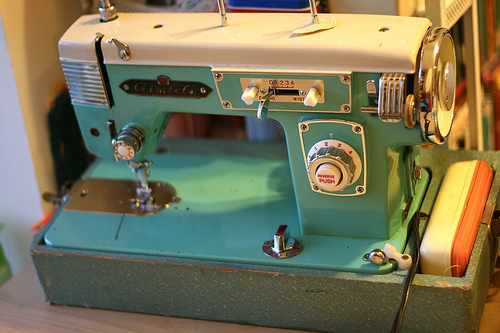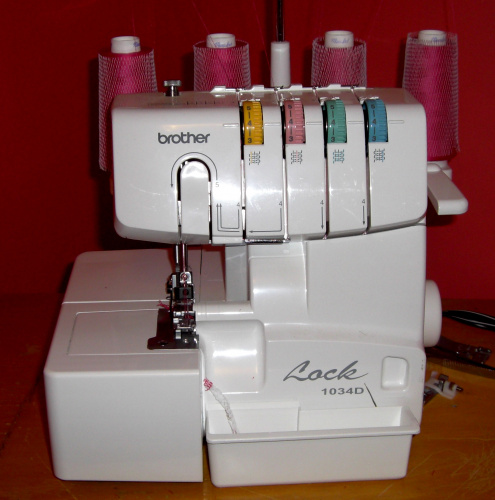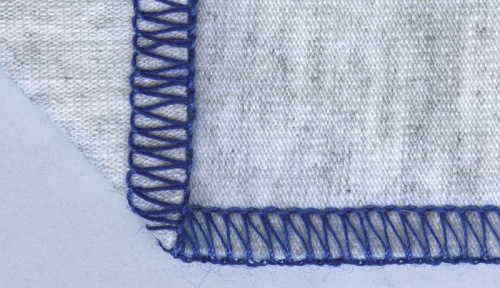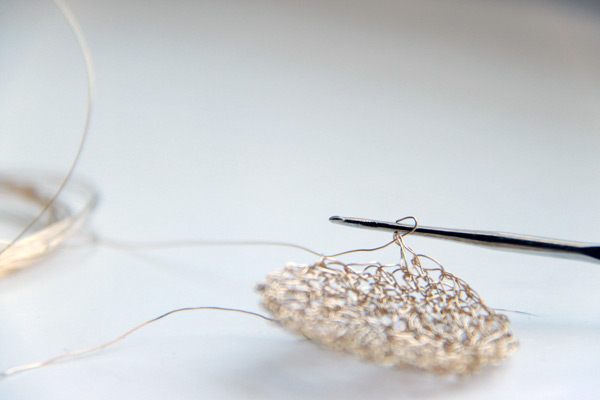Sewing- not just for clothes anymore! (Nor was it ever, really.)
More and more often, making, hacking, and fabrication projects demand flexibility. It's not just about apparel or wearables anymore; sometimes it's a matter of practicality or cost. I'm not here to talk about crafting and garment construction right now, although the same principles obviously apply, but I've gotten a lot of questions about the tools and techniques used to hack together some traditional (and non-traditional) materials, so I thought I'd share!
Let's start with a sewing machine. Not everyone has one, and they're not necessarily cheap, but it's the sensible way to construct quite a few soft structures, so we should discuss it. If you've got a machine, that's wonderful! If you haven't got a machine, but you've got access to one through a friend, hackerspace, or family member, also great! This is a great way to learn without risking the loss of a chunk of money if you don't like it. Don't have either? Don't despair! I might get some friction for this in the comments (and feel free to bring it on, machine elitists! Your input is valuable!), but for your first machine, and something you're not sure you'll use with great frequency, I recommend one of two options.
- Buy an old machine. Hit the yard sales and look for something made of metal, ideally in a weird color (mustard and avocado, not hot pink with a fisher price sticker!) I found a great guide to purchasing older machines, take a look at it if you're interested. If you're at all mechanically inclined, these older machines are gorgeous, fascinating, and a pleasure to care for and/or repair. I've also found them for as little as $20 in perfect working order.
- Buy a cheap machine. If you don't want to risk having to make repairs on an older machine, or just can't find an affordable one, unless you're really sure that you want a lot of advanced functionality and will use it often, don't spring for a fancy machine just yet. Buy a bottom-of-the-line machine from a known brand, like Singer or Brother. The cheaper it is, the more mechanically simple, which means that when things DO go wrong (and they will- machines can be finicky), it's easier to fix yourself. It's also not a huge investment if you just don't find yourself putting it to hard use.
A sewing machine is useful for fabric, but also for vinyl, leather, some papers, and even some metallic materials. You use it for straight seams, laying down long traces of conductive thread, attaching long sections of a non-sewable material to a soft base with a technique called 'Couching' (this is a great way to secure wires to a project you'd rather not use conductive thread on) and more. Unthreaded, you can also use it as a perforation tool.
Another, more specialized tool that I get asked about a lot is a serger. If you konw someone who sews, you've probably heard of it, but you may not know what it actually does. A serger (also known as an overlock machine) is a finishing tool for the edges of projects. They vary, but typically a serger will cut your material off as you sew, using four spools of thread simultaneously to create a finished edge.
You can use it independently for straight seams, so I use it instead of the sewing machine for a lot of applications, but it's not a suitable straight replacement, because you can't topstitch or finish a serged hem. Sergers used to be very expensive, but prices have dropped to around $250 for a serviceable one, which is worth it if you're using it often.
I get asked about leather a lot. It's beautiful, makes a great enclosure, finishing it imperfectly often just makes it look more rugged. It also gives your project that wonderful new car smell! There are a ton of different types of leather, and some of them require a really substantial investment in tools; since this is aimed at the beginner, I'm just going to point you towards the types of leather most suitable for machine or hand sewing. These include almost all faux leathers, a lot of garment-weight cowhides, lambskin, pigskin, and deerskin. In all cases, feel the weight and be sensible- if it's cardboard-stiff, it's probably not going to work out. If it flexes like fabric, you're likely to be okay. When sewing leather on your machine, take it slow! Broken needles aren't a huge deal, but they're still best avoided, and they're most likely to be a problem when you're roaring through the material at top speed! Entirely without sewing, you can make shaped leather pieces using boiling and gluing techniques.
Just a couple more suggestions, if you're still with me!
(image courtesy of http://thedoorinmywardrobe.com)- Did you know you can crochet wire? It looks really cool, and as long as you get the right size hook, you can easily work with wire wrap wire, silicon wire, or even stranded wire!
- You may have seen some electronic papercrafts around. These techniques are just begging to be combined with pepakura
- Absolutely opposed to sewing? Double-sided fusible interfacing and hem tapes will allow you to bond layers of fabrics and some other materials by ironing them together!
Questions? Corrections? Examples? Non sequiturs? That's what the comments are for, so get to it!










I'll have to break out the machine during the Holiday break. I had it working well a few years ago, but couldn't figure it out this past summer when I had to sew some shopping bags. It's my girlfriend's machine, but she already told me not to bother her with it, so I'm on my own :-)
The timing of this post is perfect! Just this past weekend, I was repairing a hole in an old (favorite) pair of jeans. After almost two hours of hand stitching a patch, I thought "Joe, you really need to get and learn to use a sewing machine." Of course my gadget-head brain immediately gravitated to the computer controlled models that can sew 67 billion kinds of stitches!
I'm sure there are a TON of people who are crazy about their super fancy sewing machines, and there's a ton of added functionality. I don't think I'm a luddite on most topics, but cars and sewing machines are two things that I think got a lot easier to break when they added computers :)
Some of this preference probably DOES stem from my father and grandfather. They were in sewing machine repair back when it was a purely mechanical profession, and that's where my knowledge base stems from.
I love pepakura! Someday, when I have lots of time, I will build the Howl's Moving Castle Papercraft and light it with LEDs.
Ixnay the cheap Brother machines. I've used several and feel like I spent more time troubleshooting bobbin jams than making anything. It wasn't until I got a mid-range Janome that I felt like I was actually learning anything other than how to untangle knots. But I agree on looking through goodwill and other places. I'm still kicking myself because I donated a very nice machine my mother gave to us when we were in college and my soon-to-be wire thought she would take up sewing (didn't happen).
They're DEFINITELY not a forever solution, and it's not for everyone. But if you want a machine that's pre-set up, comes with a clear instruction manual, has lots of online support, and does the easy tasks you're likely to use to learn, it can be a cheap solution. But you're right- the honeymoon phase is fleeting. In addition to bobbin jams, I've found them more a LOT more susceptible to timing problems, which are awful. Not something you want to have to pay for repairs on (if it's a cheap machine), and not something I'd really recommend most beginners fix at home, although self-identified makers are a breed apart, and probably up to the task. :)